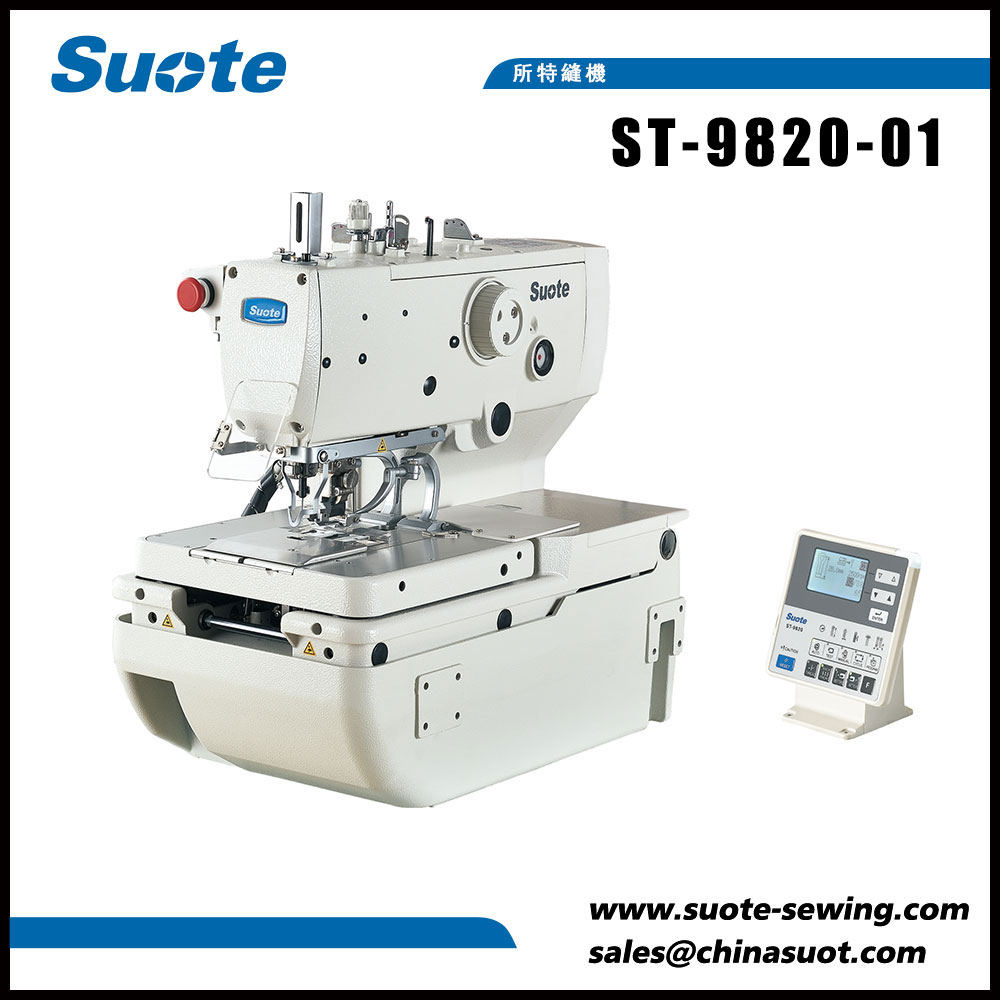The Technology Behind the Electronic Eyelet Button Holer Sewing Machine
2024-12-21
The textile and garment manufacturing industry is known for its emphasis on innovation, especially when it comes to improving productivity and quality. One area where technology has made significant strides is in the creation of buttonholes and eyelets on fabrics. Enter the Electronic Eyelet Button Holer Sewing Machine—a revolutionary tool that has transformed the way we think about garment finishing.
What Makes the Electronic Eyelet Button Holer Sewing Machine Unique?
Unlike traditional buttonhole machines that rely on mechanical adjustments, electronic buttonholers utilize digital control systems to automate most of the sewing process. These systems are designed to provide customization, precision, and consistency, offering manufacturers a more efficient way to produce high-quality buttonholes and eyelets.
Here’s a closer look at the core technology behind these machines:
1. Programmable Control Systems
At the heart of the electronic buttonholer is a programmable control system. This allows users to input specific parameters such as buttonhole size, stitch length, and even the number of stitches per buttonhole. Through this system, the machine can automatically adjust its settings to match the desired output.
For instance, a tailor may need different buttonhole sizes for various garments—shirts, trousers, coats, etc. Rather than manually altering the machine for each size, the operator can input a preset code, and the machine will adjust automatically. This eliminates human error and speeds up the production process.
2. Advanced Stitching Mechanisms
Another major technological advancement is the use of automatic stitch patterns. The machine can store and recall multiple stitch patterns, ensuring a precise and consistent result each time. Modern electronic eyelet buttonholers can even create decorative stitches and zigzag patterns for more intricate designs.
The stitching mechanism is powered by servo motors, which provide better control, greater efficiency, and quieter operation compared to traditional machines. These motors allow for fine-tuned adjustments, which is essential for delicate fabrics and high-end garments that require a softer, more controlled stitch.
3. Eyelet Functionality
Creating eyelets (small reinforced holes for laces or decorative touches) is another key feature of these machines. Eyelets can be challenging to produce with precision, but with the right technology, they can be automated. The electronic buttonholer comes with a reinforced eyelet mechanism, which ensures that the fabric around the eyelet is securely stitched, preventing fraying or tearing. This mechanism is ideal for high-stress areas like shoes, belts, and outerwear.
4. Automatic Fabric Feed and Adjustment
One of the key elements of any industrial sewing machine is the ability to feed fabric smoothly. The automatic fabric feeding system in electronic buttonholers ensures that the fabric moves seamlessly through the machine, reducing fabric bunching or misalignment. This guarantees that the buttonholes or eyelets are placed in exactly the right spot every time.
In addition to fabric feeding, many models come with automatic presser foot height adjustment, ensuring that the machine maintains consistent pressure on the fabric regardless of thickness. This makes it versatile for different types of materials, from lightweight cottons to heavy denim and leather.
5. Touchscreen and User Interface
Many modern electronic eyelet buttonholer machines come equipped with touchscreens and digital interfaces that make operation incredibly user-friendly. These interfaces are highly intuitive and allow operators to input settings, choose stitch patterns, and monitor the machine’s performance in real-time.
The touchscreen can also display error messages, maintenance prompts, or status updates, helping operators troubleshoot issues quickly without needing to stop production. This digital integration is crucial for minimizing downtime and ensuring that operations run smoothly.
6. Enhanced Durability and Maintenance Features
The electronics and advanced mechanical systems in these machines are designed for long-term durability. Many models feature self-lubricating systems, which reduce the need for frequent maintenance and ensure that the machine continues to operate at peak performance.
Additionally, because the machines are electronically controlled, they often feature automatic calibration systems that allow for more accurate stitching and fewer mechanical failures over time.
The Electronic Eyelet Button Holer Sewing Machine is a testament to the power of technology in modern textile production. By automating the buttonhole and eyelet process, this machine offers a level of precision and speed that traditional methods simply can’t match. With customizable settings, automatic adjustments, and advanced stitching technology, manufacturers can produce high-quality garments at a faster pace while minimizing errors.
As the fashion industry continues to demand more efficiency and customization, the electronic eyelet buttonholer will remain an essential tool for high-end manufacturers who prioritize both quality and speed. For those in the garment manufacturing industry, embracing these advanced machines could be the key to staying ahead in an increasingly competitive market.


